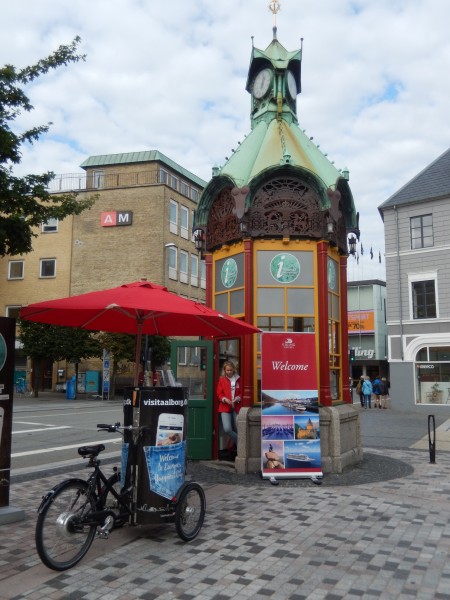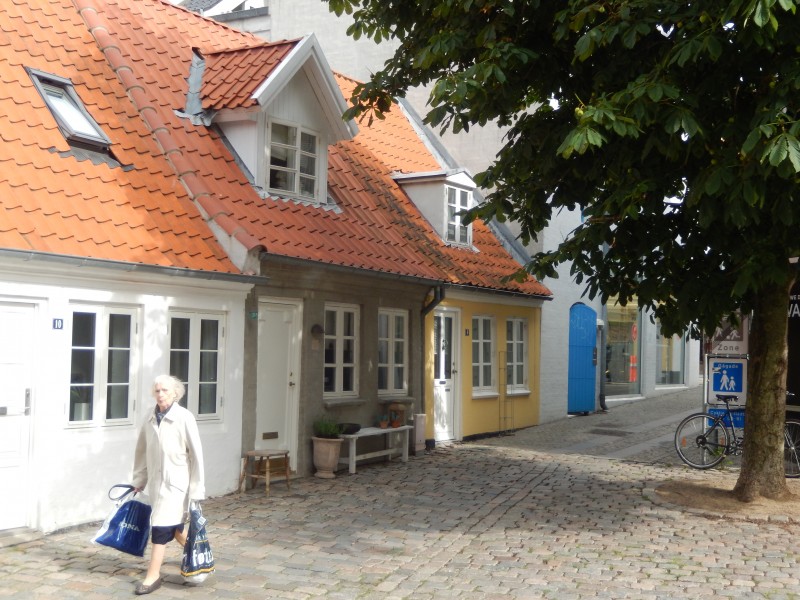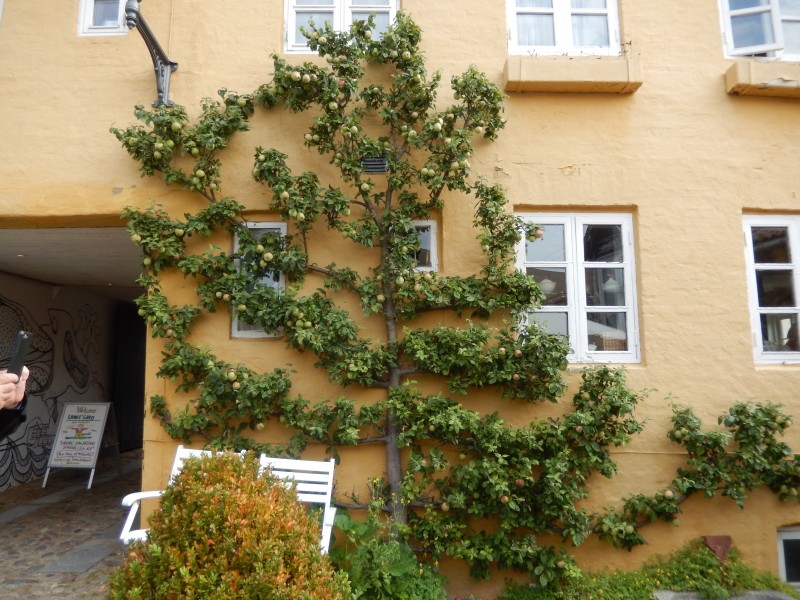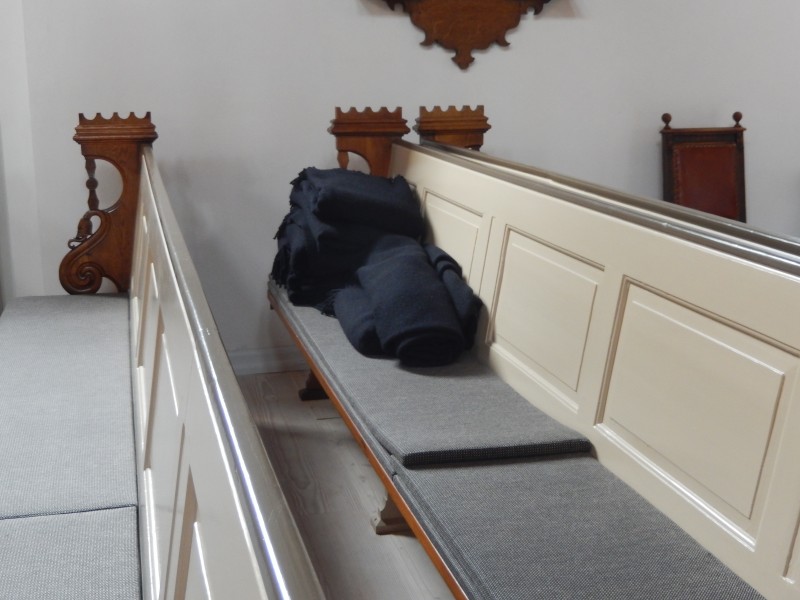What a beautiful, clean little town Ålborg is! Denmark is recognized as the happiest country in the world and Ålborg is ranked as the happiest city in Denmark. It’s hard to beat that on a Sunday morning. It’s holiday time in Europe, so the streets were without crowds and the sun was shining. It was definitely a day for happiness.
One of the first things we saw in Ålborg was a converted telephone booth. There are still a lot of working telephone booths (with an actual telephone inside) in the cities we’ve visited, but no one wanted this particular phone booth. The city of Ålborg said it would take it and the city converted it to a little tourist information center. After doing so, there were a number of requests from other entities to buy the phone booth, but Ålborg told them they were too late; Ålborg is keeping it.

Surprise! Viking information is available here and we’re on a Viking cruise. Hmmm. . .
On our city tour/walk, we passed some very tiny houses. They were formerly the homes of families, but are now more popular for singles or just-married couples.

A row of little houses, complete with a single (?) resident.

This house is called the “pregnant house.” I have no idea what purpose the bulge on the front serves.

In a courtyard behind the little houses, we saw this apple tree. Our guide said it is a typical way to grow a fruit tree because it uses much less space in a small area.
The post office in Ålborg dates back to the 1600s. In those days, pigeons were used to deliver messages. The pigeon holes are still visible in the old building, although delivery methods are more modern now.

There are nine pigeon holes on each face of the tower, just below the long narrow windows.
Of course we visited a local church. Even with the reduction in ornate decorations following the Reformation from Catholicism to Lutheranism, the old European churches are very beautiful. Our Baltic Sea cruise is subtitled “Viking Homelands” and includes the lands in which the Vikings lived. It is a tradition in the Viking Lutheran churches to hang a model ship from the ceiling. God guides the ship safely on voyages and then thanks are given to God in return.

Here is the ship hanging in the Ålborg church.

The altar and baptismal font (left) of the church. There is a large pipe organ in the back of the sanctuary.

It’s cold up here. Blankets are ready for worshippers.
As we traveled through the European Union, we heard over and over again about the wonderful social benefits. Health care is free for all. In fact, this has created an industry called “health tourism.” People from countries with expensive health care costs (e.g., the United States) come to these countries on a “vacation.” Then, while visiting, they become ill with their existing expensive condition (cancer, heart problem, etc.) and have the condition treated/cured at no cost. They return home, having spent less on the travel than they would have on the treatment in their own countries.
A similar phenomenon is happening in the schools. Education through the college level is free to all. In Denmark, students are also paid about €400 per month–enough for rent and food. This is great, because it results in a highly educated population. It also attracts many students from other countries who are seeking a first-class education without the heavy burden of student loans.
Denmark is a wonderful place to begin a new business. Incubator buildings for start-ups are rent-free (paid for with tax income) and entrepreneurs are given an allowance to support them while their businesses become established. In addition, at least in Denmark, everyone is cared for. If you cannot make a living wage, the government will give you an allowance sufficient to provide you with a reasonable standard of living.
The cost of this is an income tax rate of 35-79 percent. The tax on the purchase of a new car is 180 percent in Denmark. (Not a typo–it’s a three-digit percentage!) This definitely encourages people to buy smaller, less expensive cars! The many social benefits are taking a toll on the financial base of the country because people from overseas who take advantage of the health care and educational benefits are not contributing to the tax income.
There is a downside to all of these “free” financial benefits. Our guide mentioned that the generous benefits contribute significantly to a lack of initiative among some of the population: “If I don’t like how things are going for me financially, I’ll just let the government support me.” I heard a similar comment about initiative from a South Korean in one of my graduate classes. I asked him about the focus on math and science in many Asian countries and he said it is true that Korea/Asia produces students who excel in math and science. On the other hand, he pointed out, with the broader curriculum in the United States, students have opportunities to try out new ideas in many subjects and to develop new things in more than a single field of study. My conclusion: there is no easy solution to the best way of doing things. Even so, Ålborg on a summer Sunday morning was a lovely place to visit.